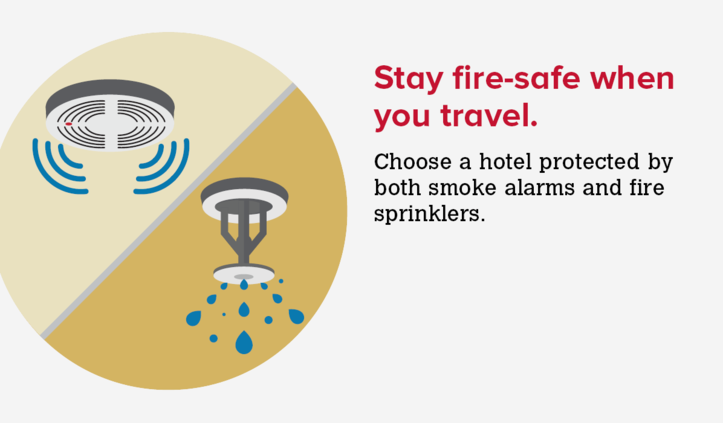Life safety of guests and associates turn out to be prime importance in the hotel industry. Almost all the major operator brands across the globe have formulated their own standards and requirements regarding the fire and life safety aspects; these are collectively termed as FLS (Fire Life Safety) standards.
FLS Standards are to ensure that the hotel property is designed with proper protective mechanism. In-order to guide and assist project management team, the brand operator will have internal or external FLS consultants. Proper coordination with these consultants is vital from the design stage, for incorporating the brand requirements and for hassle free clearance of FLS Audits.
FLS auditor will conduct onsite FLS audit during the final stage of the project. FLS audit is a mandatory safety audit trail conducted before the opening of a hospitality property which ensures the property is free from any potential fire and life safety hazards, all the mandated fire life safety systems are implemented and operational for ensuring the safety of guests.
During the FLS audit, all the life safety systems will be tested for its accuracy of operation. Main area of focus will be Passive Fire Protection Systems, Egress Routes, Building Compartmentalization and Fire Ratings, Fire Alarm & Public Address System and its integration with various sub-systems like HVAC Systems, Elevators, Smoke Control Systems, Access Control System, Audio-Video Systems etc. In addition to the local statutory regulations related to fire safety, it is required to comply all the FLS requirements, which are normally stringent than the local statutory regulations. In case of conflict and if the statutory requirement is less stringent, FLS standards needs to be complied and vice versa.
The FLS Standards set forth by the operator brands are based on the global standards like NFPA, UL, FM etc. and are generally very stringent. Unless successful closure of FLS audit, property will not be allowed for even preliminary operations.
Listed below are some common standards/requirements which are grouped, and emphasis is given for generalization, for better understanding. Though these norms are generic in nature, some of these standards may vary from brand to brand.
1. Building, Architectural & Interior Related:
- All local statutory regulations related fire life safety to be complied
- Doors and partitions should be provided with required fire rating as per standards
- All the interior spaces of the building should have primary and secondary exit paths and staircases
- Panic hardware are required to be provided in the doors coming in the egress path
- Swing of doors shall be in the direction of egress
- Re-entry from the exit staircase landing to be provided, wherever required
- Vertical and horizontal sealing of shafts, floor and wall openings with fire sealant
2. Automatic Fire Sprinkler & Hydrant System
- Sprinklers are required in all areas inside the building except wherever restricted by the local statutory rules
- All the sprinklers used shall be quick response type
- Dry sprinklers required in Cold Rooms
- Time delayed flow switches (Between 30-60 Seconds) integrated with fire alarm systems are to be provided in all sprinkler zones
- Local and remote drain lines are required in each zone of sprinkler
- Tamper switches integrated with fire alarm is to be provided for all zone control valves
- Proper sequence of operation of pumps shall be ensured. Jockey pump shall be followed by Electric-driven main pump and finally diesel pump
3. Addressable Fire Alarm & Public Addressing System:
Some of the generic requirements related to FA& PA systems are provided below
- Fully addressable fire alarm system is required
- All the smoke and heat detectors to be phot-electric type
- Required sound output level (E.g.: 75 dB at Pillow Level) is needed from PA System
- Heat Detectors are required in Cooking areas inside Kitchen
- CO Sensors are required in Kitchen with Local Sounder
- Sounder based Smoke Sensors are required in Guest Rooms
- Proper tagging of devices with respect to the location
- Activation of Smoke/Heat Detectors should automatically
# Shut-off AHU/TFA/FA Fans
# General Alarm sequence to be initiated
# Activate Smoke Control Systems
# Stairwell Pressurization Systems
# Mute the background music systems to allow the occupants to hear the PA message
# Brings elevators to landing floors. Secondary recall function is also required
# Disable Access Control Doors
- Monitoring of Diesel Driven Generators through Fire Alarm System
- Monitoring of Fire Pumps & Kitchen Hood Suppression System
- Hooter/Strobe shall be provided at every 30 Mtrs. including all ADA Rooms
- Battery backup for Fire Alarm & PA System in normal and alarm condition to be met
- Positive Alarm Sequence for Fire Alarm Systems
4. Kitchen Hood Fire Suppression System:
Hood fire suppression system is essential for the safe operation of the Kitchen. Activation of Fire Suppression system enables the follows
- Shut-off LPG supply to hood
- Shut-off electric power to nearby kitchen equipment
- Activation of Fire Alarm Sequence of operation insisted by the brand standard
Operations team could not start even the pre-opening trails without being the system cleared by the FLS Consultant
5. Air-conditioning and Mechanical Ventilation:
ACMV Systems plays a key role in maintaining the building fire proof during normal and emergency situations. Some of the standards requirements are below
- Stairwell Pressurization system is required for all staircases
- Smoke Extraction system is required for all public areas with not less than 6 ACPH. i.e. the smoke extraction system should be able to clear the smoke and the directional exit signage should be visible within 10 minutes. Fresh Air Fans, Smoke Extract Fans coupled with automatic motorized fire dampers are integrated with Fire Alarm system for automatic activation.
6. Electrical Systems Related:
- Illuminated exit signages are required with required backup
- Emergency backup generator should be capable of supplying power in 10 Seconds
- Emergency backup generator should have 100% backup capacity
- Run Status of Diesel Generators are to be monitored with Fire Alarm System
- Fire Suppression System for LT Panels and Server Rooms
It is evident from the above that complying with the requirements set forth by the brand operator is tedious task and hence collaborative involvement by the project management team with FLS Consultant is required throughout the entire project management phase. Project team should identify the requirements from the concept design stage itself, which helps to identify systems complying with the norms, enable the team to envisage required provisions in all ancillary systems. After the commissioning, the project management team needs to conduct multiple inspections and system operation trails to ensure correct sequence of operation before the FLS inspection, in order to ensure that all the requirements have been met. This will enable FLS clearance smoothly.


